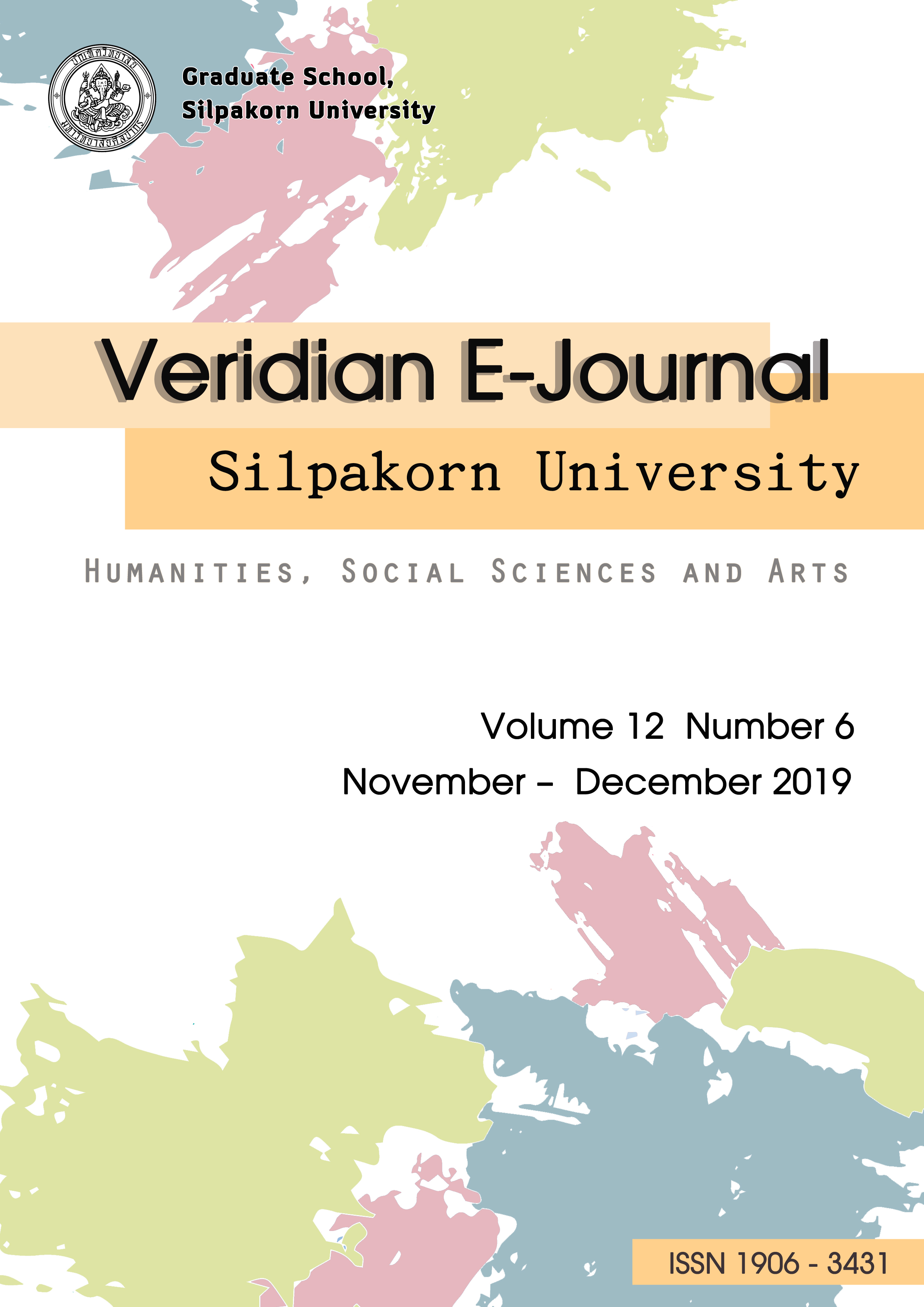สภาพการออกกำลังกายของผู้สูงอายุในชุมชนภาคเหนือของประเทศไทย (Exercise condition of older people dwelling-community in the Northern)
Main Article Content
บทคัดย่อ
การวิจัยนี้มีวัตถุประสงค์เพื่อศึกษาสภาพการมีพฤติกรรมการออกกำลังกายในผู้สูงอายุในพื้นที่ตำบลบ้านเหล่า อำเภอแม่ใจ จังหวัดพะเยา และเปรียบเทียบค่าเฉลี่ยคะแนนพฤติกรรมการออกกำลังกายของผู้สูงอายุต่างช่วงวัย กลุ่มประชากรเป็นผู้สูงอายุในตำบลบ้านเหล่า อำเภอแม่ใจ จังหวัดพะเยา จำนวน 1,326 คน เครื่องมือวิจัยเป็นแบบประเมินพฤติกรรมการออกกำลังกาย จำนวน 1 ฉบับ วิเคราะห์ข้อมูลด้วยความถี่ ร้อยละ ค่าเฉลี่ย ค่าเบี่ยงเบนมาตรฐาน และการวิเคราะห์ความแปรปรวนทางเดียว (One-way ANOVA) ด้วยวิธีการ Scheffe ผลการวิจัย พบว่า ร้อยละ 53.8 เป็นเพศหญิง มีอายุเฉลี่ย 69.43 ปี เป็นผู้สูงอายุตอนต้น ร้อยละ 60.18 ผู้สูงอายุตอนกลาง ร้อยละ 25.72 ผู้สูงอายุตอนปลาย ร้อยละ 14.10 ด้านพฤติกรรมการออกกำลังกายพบว่าใน 1 เดือนที่ผ่านมามีการออกกำลังกาย ร้อยละ 63.70 ร้อยละ 32.24 ออกกำลังกายด้วยการปั่นจักรยาน โดยใช้เวลาแต่ละครั้งมากกว่า 30 นาที ร้อยละ 42.24 ความถี่ในการออกกำลังกายมากกว่า 5 ครั้งต่อสัปดาห์ ร้อยละ 30.28 และมีความเพลิดเพลินในการออกกำลังกาย คิดเป็นร้อยละ 97.98 ซึ่งกลุ่มผู้สูงอายุตอนต้น กลุ่มผู้สูงอายุตอนกลาง และกลุ่มผู้สูงอายุตอนปลายมีค่าเฉลี่ยคะแนนพฤติกรรมการออกกำลังกายเท่ากับ 11.12 คะแนน 10.50 คะแนน และ 6.35 คะแนน ตามลำดับ โดยผลการวิเคราะห์เปรียบเทียบค่าคะแนนพฤติกรรมการออกกำลังกายระหว่างกลุ่มวัย พบว่า ผู้สูงอายุที่อยู่ในกลุ่มวัยแตกต่างกันมีความค่าเฉลี่ยคะแนนพฤติกรรมการออกกำลังกายอย่างน้อย 2 กลุ่มวัยที่แตกต่างกันอย่างมีนัยสำคัญทางสถิติที่ระดับ .05 เมื่อพิจารณารายคู่ พบว่า กลุ่มผู้สูงอายุตอนต้นมีค่าเฉลี่ยคะแนนพฤติกรรมการออกกำลังกายแตกต่างกันกับกลุ่มผู้สูงอายุตอนปลาย อย่างมีนัยสำคัญทางสถิติที่ระดับ .05 กลุ่มผู้สูงอายุตอนกลางมีค่าเฉลี่ยคะแนนพฤติกรรมการออกกำลังกายแตกต่างกันกับกลุ่มผู้สูงอายุตอนปลาย อย่างมีนัยสำคัญทางสถิติที่ระดับ .05 แต่กลุ่มผู้สูงอายุตอนต้นมีค่าเฉลี่ยคะแนนพฤติกรรมการออกกำลังกายไม่แตกต่างกันกับกลุ่มผู้สูงอายุตอนกลาง จากผลการศึกษา เจ้าหน้าที่สาธารณสุขที่มีความเกี่ยวข้องกับการดูแลสุขภาพของประชาชนควรปฏิบัติงานในเชิงรุกในการส่งเสริมพฤติกรรมสุขภาพของผู้สูงอายุทุกราย โดยเฉพาะกลุ่มผู้สูงอายุตอนปลาย (อายุตั้งแต่ 80 ปีขึ้นไป) และผู้สูงอายุที่ไม่ได้ออกกำลังกาย ให้มีการออกกำลังกายอย่างสม่ำเสมอ ต่อเนื่องเพื่อการมีสุขภาพที่แข็งแรงและมีคุณภาพชีวิตที่ดี
The purpose of this research was to investigate the condition of exercise behavior among older people in Ban Lao Subdistrict, Mae Chai Subdistrict, Phayao Province and to compare the average scores of exercise behavior of older people in different age groups. The population was 1,326 older people in Ban Lao Subdistrict, Mae Chai District, Phayao Province. The research instruments were demographic and the exercise behavior assessment. Data were analyzed by frequency, percentage, mean, standard deviation and one-way analysis of variance (One-way ANOVA) by Scheffe method. The results of the study showed that there were 53.8 percent female. The average age was 69.43 years. They were divided into the young-old group at 60.18 percent, middle-old group at 25.72 percent, old-old group at 14.10 percent respectively. In the past one month, 63.70 percent performed exercise and 32.24 percent took over 30 minutes of exercise duration, while 30.28 percent performed 5 times a week. Most of them (97.98 percent) enjoyed their exercise. The young-old, middle-old and old-old groups had the average score of exercise behavior at 11.12, 10.50 and 6.35 points, respectively. The comparison of exercise behavior between age groups was found that there were 2 different age groups showing a statistic significant at .05 level. Considering to a pair of age groups, it was found that young-old group had an average score of exercise behavior different from the old-old group with statistic significant at the level of .05. The middle-old group had different mean scores of exercise behaviors from the old-old group with statistical significance at the level of .05. However, the young-old group had no different average score of exercise behavior from the middle-old group. These findings suggested that the public health personals should be more proactive in promoting health behaviors on all older people in community, especially for the old-old group (more than 80 years old) and those who did not regularly. These are the recommends to increase health and a good quality of life.

